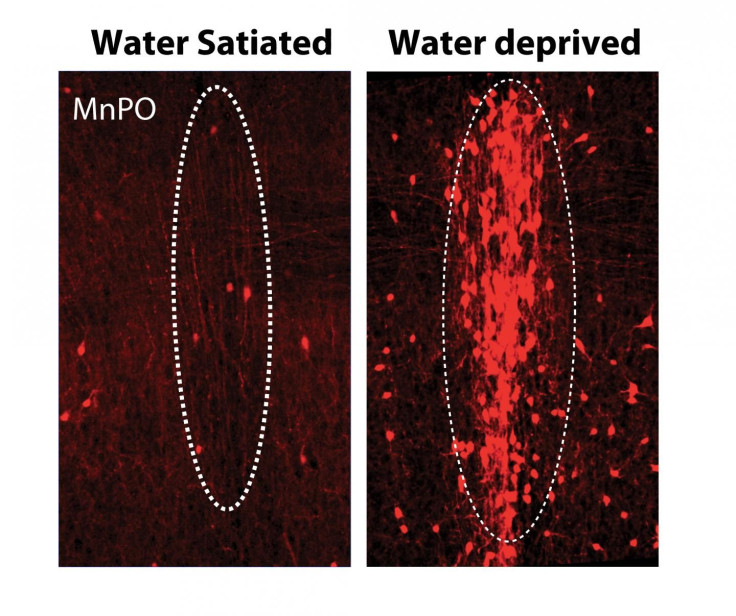Quench Your Thirst: Scientists Suppress Neurons That Instinctively Seek Water

In another discovery that furthers our understanding of how the brain controls the body’s physiological needs, scientists have identified the neurons that effectively govern the instinct of thirst. Working with mice in the laboratory, the scientists could increase or decrease the amount of water consumed by the test subjects.
In a paper appearing online Thursday in the journal Science, researchers from Stanford University looked at the median preoptic nucleus — a region of the brain that previous research had suggested was linked to the sensation of thirst. However, the exact mechanism behind the link was not understood.
The Stanford team of researchers looked at the RNA expression within the median preoptic nucleus, which apart from thirst is also involved in other functions like regulation of sleep and response to decrease in the body’s core temperature. Mice were deprived of water for 48 hours and a cluster of neurons that got excited as a result was identified as an area of interest.
Next, the scientists inhibited these neurons from firing using optogenetics, and found the mice reduced their intake of water correspondingly. By contrast, when the same neurons were photoactivated, even in mice that had already had their fill of water, the animals drank more water.
Some mice were trained to press a lever that would provide them access to water, and testing various permutations, the scientists found that “the rate of lever-pressing corresponded with a decrease in neural activity over time,” which suggested that neuron activity in the median preoptic nucleus adjusts over time depending on the amount of water intake.
However, the feeling of artificially created thirst by firing neurons was still considered an aversive state by the mice. Researchers found that “mice provided an opportunity to shut off photoactivation of MnPO [median preoptic nucleus] neurons by lever pressing did so vigorously, ending the undesirable feeling of thirst,” a statement by the journal said Thursday.
“When thirsty, animals perform actions that lead to water consumption, which reduces the aversive MnPO activity by some amount. These actions are repeated until enough water is consumed that the level of aversion ceases to evoke behavior. In doing so, an association is formed between particular actions and reduction of an aversive state, which would contribute to making those actions more likely to be repeated when the animal is thirsty again in the future,” the researchers wrote in the study.

Based on the variety of other brain regions that the MnPO thirst neurons are connected to, as identified in their research, the Stanford team said the instinct of thirst could translate into “specific goal-directed actions.”
The research, however, does not suggest it is healthy or wise to artificially control your thirst by firing the responsible neuron cluster in your median preoptic nucleus. So at least for now, if you are thirsty, just drink some water.
The paper is titled “Thirst-associated preoptic neurons encode an aversive motivational drive” and an abstract can be read here.
© Copyright IBTimes 2024. All rights reserved.





















